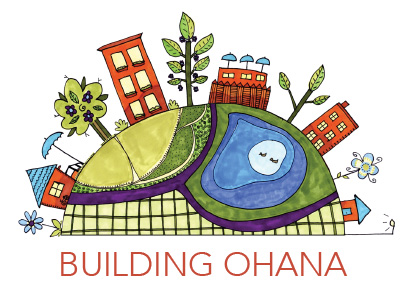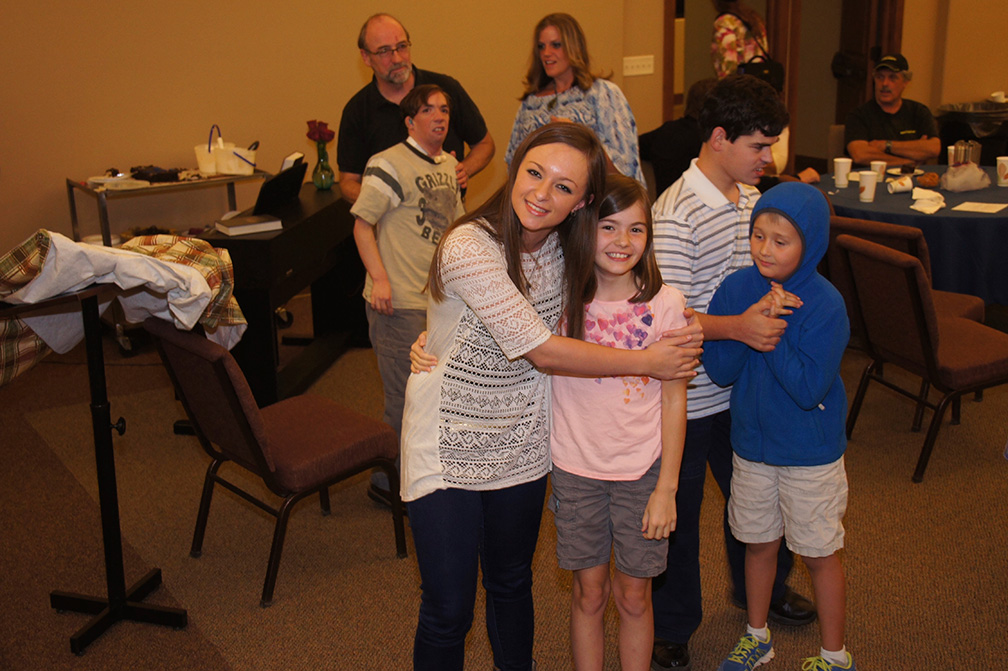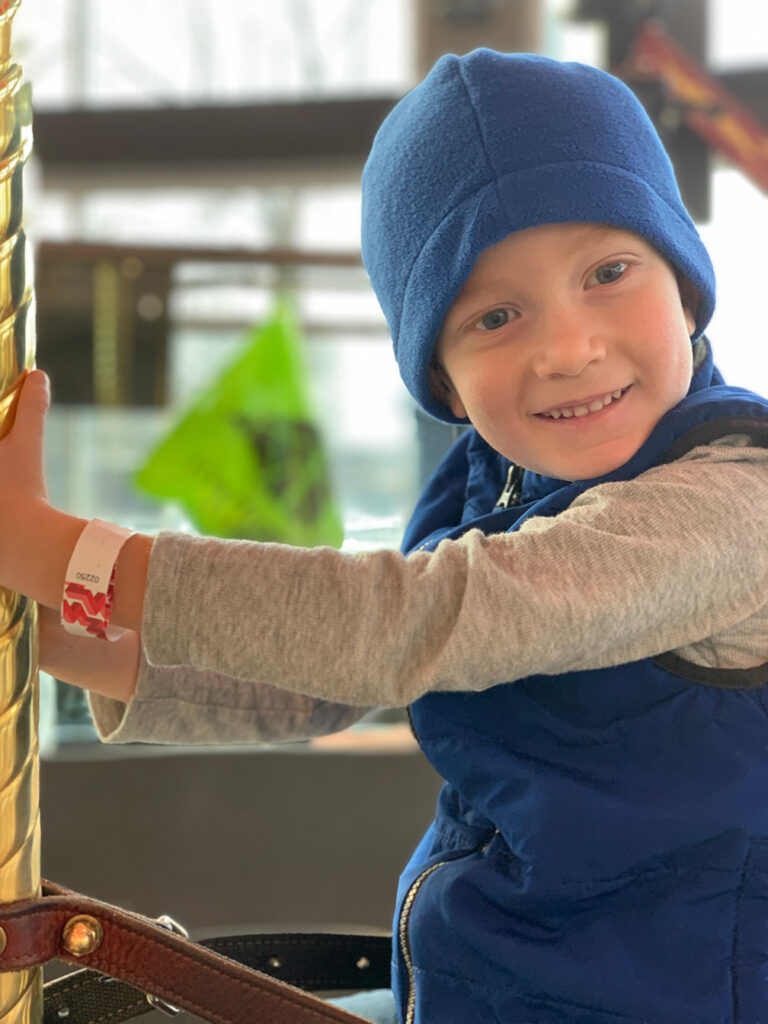Deb Finck and Brenda Eheart
“Social connection stands out as a largely unrecognized and underappreciated force for addressing many of the critical problems we’re dealing with, both as individuals and as a society. Overcoming loneliness and building a more connected future is an urgent mission that we can and must tackle together.”
Together: The Healing Power of Human Connection in a Sometimes Lonely World Vivec Murthy, US Surgeon General
Grandpa Bill, who had multiple health issues, lived in the intentional neighborhood of Hope Meadows in rural Illinois where the children called many of their older neighbors Grandpa and Grandma. He once said, “The medications just made me wanna sit in a chair, so I wasn’t getting outside very much. The kids, not seeing me, all started dropping in wanting to know how I was. You can’t describe the feeling you get from loving these children, and from the love and respect you get back from them.” Children stopping by to visit with their surrogate grandparents was a daily occurrence, whether these grandfriends were sick or not. In this neighborhood, everyone was connected; everyone cared.
For the children who came to Hope, many from homes of neglect and abuse, for their foster/adopt parents, and for the older adults who battled illness and loneliness, these close and caring relationships were not accidental. They were an essential part of the community’s ethos and the Hope way of life. Effie King, age 70, described it this way: “It’s the bonding going on here. The sharing and giving, the concern and commitment, the support and safety. This is a Godsend.” What Effie describes is the essence of relational care — built on reciprocity and deeply anchored in the emotional and lived experiences between committed families, friends, and neighbors who know each other well. Numerous studies have found this kind of natural care to be fundamental to wellbeing for all of us, and even more essential when we are in need of significant help or support.
Recognizing What’s Missing
It is frankly a myth that we can even begin to replace the benefits of close and caring relationships with professional systems of care. We need both, with carers from both realms acting as connected members of a team of support—people with medical, legal, and social services expertise working alongside the ordinary people in our lives who love us and know us and who sincerely want to be there for us.
The need for this kind of multifaceted care is no longer denied by systems experts who recognize a longstanding disconnect between relational care and professional care services— experts who clearly understand the weaknesses of our current systems to address the vulnerability of so many who feel discounted, isolated, and lonely just when they need help the most. This happens when people age and are moved to understaffed nursing homes; when young adults with developmental disabilities age out of public education and struggle to find a place of belonging in the larger community; when children lose their parents and are placed in an already overburdened foster care system; or, when individuals with mental health challenges are treated as social pariahs or criminals. Examples abound.
Users are not the only victims. Professionals in every field are struggling with the limitations of the systems they serve. In his newly published book, The Emergency: A Year of Healing and Heartbreak in a Chicago ER, Dr. Thomas Fisher writes of his experiences of hurt and shame during the height of the pandemic as he was forced to “deny patients simple graces like pillows or a visitor,” describing himself as a “perpetuator of the system’s mistreatment, and also a casualty.“ Covid pressed a system bound by “rules and resources” to respond to an unprecedented crisis, it is true, but it has also revealed the fault lines created by the complex expectations for care that no system can fulfill. We are all casualties.
Proven Solutions
Former NIMH director, Dr. Thomas Insel, in his recent book, Healing, writes that Americans are facing a “crisis of care” as “we fail to deliver on what we know, and we fail to use what works.” Intentional neighboring offers a model for care that addresses these concerns, creating reliable circles of care and support within neighborhoods of ordinary people. These are the very people capable of delivering what works for the ones they love, a workforce of relational care providers too often ignored for their expertise. At Hope Meadows, grandfriends extended the circle of support for the children beyond paid foster families, counselors and physicians and outward to the relational caregivers who thought of them as family. Grandpa Al, a retired army medic, always seemed to know where to look when young Calvin from down the block would run away, which he did frequently! Finding him, Al would sit and listen patiently and with profound care, share some thoughts, and then walk Calvin back home—much to the relief of his mom. Our local police, once they came to know the residents of the Hope neighborhood, soon welcomed this kind of intervention where love became the dominant focus rather than problems, deficits, or challenges. Over time, law enforcement, having learned they could count upon the residents for assistance, also began to routinely take part in many of Hope’s community celebrations. The result was increased wellbeing and safety for everyone.
Some physicians also came to value the help and input from Hope residents. These doctors recognized that rehab facilities weren’t always the next best step for their patients’ recovery as they witnessed the way our entire neighborhood waited to receive and care for them in their homes. Miss Irene returned home on Christmas Eve after hip surgery, happy to be home, but
sad because she would not be able to host her annual Christmas Eve party. Neighbors came anyway, bringing food and good cheer. Fran, who lived next door, helped Irene to bed and spent the night to make sure she would be ok. These neighbors were trusted friends whose care brought happiness and safety to the recovering patient. Miss Irene knew she was loved and cared for.
Inclusive, relational/professional care teams grew from these experiences, as the needs of individuals and families were considered by both neighbors and providers who listened and talked to one another with health and wellbeing in mind. This created relationships out of which trust and mutual respect emerged. And it was at this intersection of caring where outcomes for our residents were truly changed, as neighbors worked with not only police and physicians, but teachers, social workers and therapists too. The circle of care widened, and everyone benefited.
Age-Old Values and a New and Inclusive Community Mindset
Building a strong foundation for success and resilience for children, according to researchers at the Harvard University Center on the Developing Child, is to combine science-informed thinking with on-the-ground expertise and the lived experiences of families under a wide variety of conditions. Following this advice and that of Dr. Murthy who reminds us that “We forget some of the oldest medicines we have are love and compassion, and they can be deployed by everyone,” we have the beginnings of a powerful new catalyst for change, for relational/professional care teams to benefit not only children, but all of us caught in the crisis of care. This focus on the power of care teams is a means to heal divisions and create the deep and inclusive connections we all need to act on one another’s behalf within communities.
We believe that new communities of intentional neighboring, such as Ohana Village in Spokane Washington, a project focusing on “People, Place and Purpose” to create health and wellness for a diverse population of residents, offer both hub and workforce potential for transforming our approach to whole health care. Ohana and other intentional neighborhood communities can
- • bring neighbors of all ages, backgrounds and abilities to the forefront of care as valued contributors to a whole health model for care and restoration;
- • revitalize the capacity of place—specifically home and neighborhoods—as centers for human health and growth for every resident, and where the power of involved intentional community is harnessed to impact how soon, how often and how much we need formal, paid services/supports throughout our lives;
- • build relationships with professionals based on familiarity, trust, shared experiences and very importantly, a shared purpose to enhance the experience of helping and healing.
More and more communities like these are emerging in cities, towns and rural areas all over the US, many in response to particular needs for care and social connection. In building upon the strength of daily relationships to enhance health and wellbeing for every resident and to support the professionals who work within it, communities of intentional neighboring can open the door to inclusive collaborations for change across every system of support. Neighbors made of families and friends, no matter our age, ability, income or background, can be part of that collaboration and a work that transforms us all.
It Already Works
It may seem like a recipe for failure—the collaboration between highly trained professionals and the ordinary people they serve. But our legal systems offer an example of longstanding success of this collaboration in the American jury system. Scott Turow, former assistant US Attorney, defense lawyer and bestselling novelist, points out that courtroom decisions regarding a defendant’s guilt or innocence are not made by government officials, lawyers or judges but by “the people who live and work and worship” with that person “in the same neighborhoods and streets.” These decisions, Turow writes, are “laid before so-called ordinary folks” who—in the end—“are not ordinary at all.”
Bill, Al, Effie, Irene, Fran, and the children/families at Hope were also “not ordinary at all.” When these relational caregivers were able to partner with professional care providers, a mutual respect emerged, resulting in more personalized and holistic intervention for the people who needed their help. Intentional neighboring provided the social infrastructure upon which these partnerships grew, against tradition, against all boundaries, against all odds.











